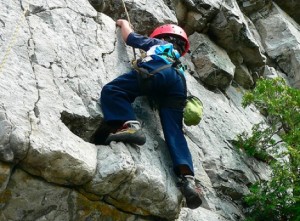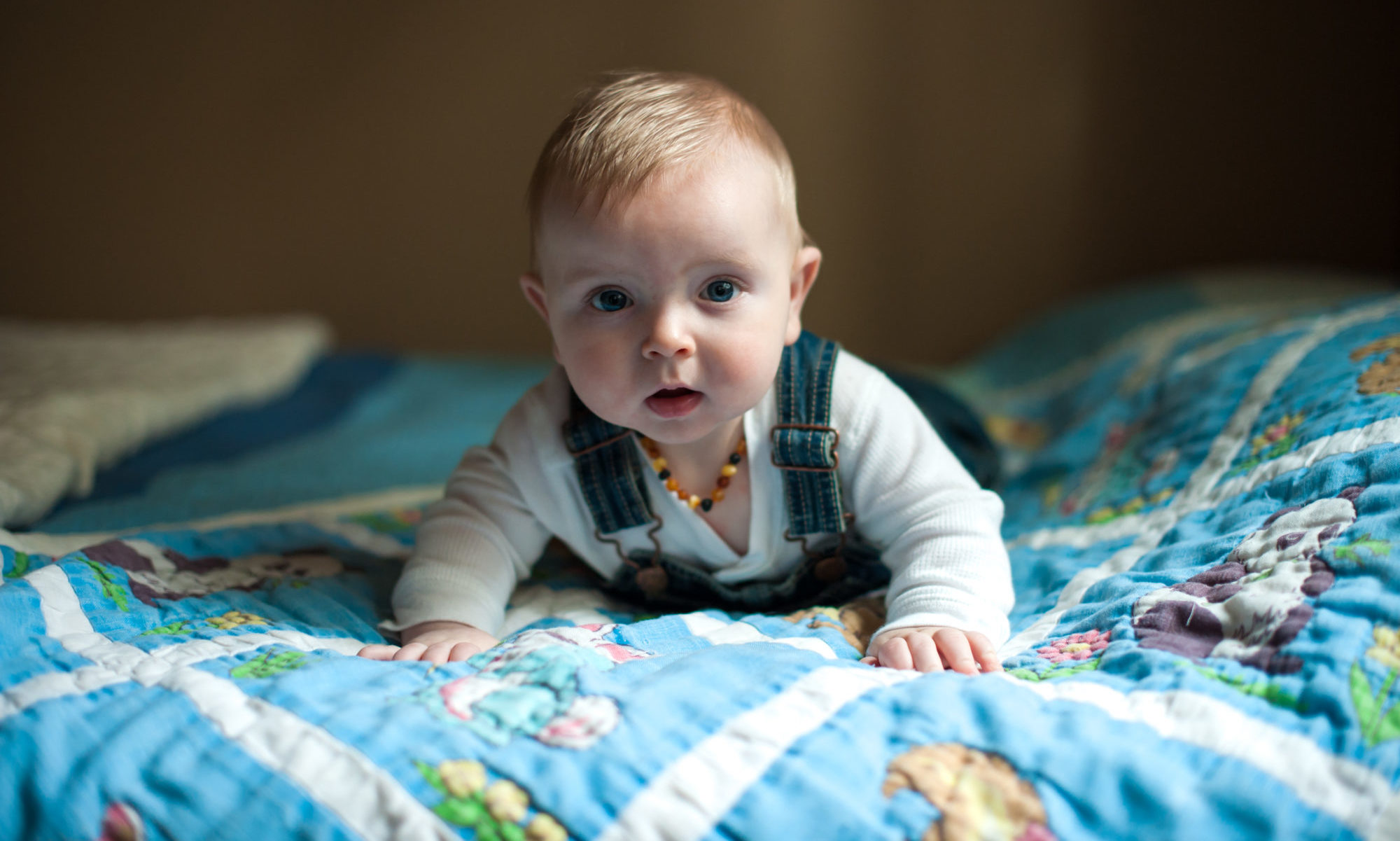 It’s easy to become overprotective of kids, especially our own. It’s as if we can suddenly see 10 steps ahead and we KNOW that something horrible is about to happen. But what if our children don’t actually need our warnings, fears, and concerns in order to keep themselves safe?
It’s easy to become overprotective of kids, especially our own. It’s as if we can suddenly see 10 steps ahead and we KNOW that something horrible is about to happen. But what if our children don’t actually need our warnings, fears, and concerns in order to keep themselves safe?
When I was in college I learned about this incredible study that was done with babies who had recently learned to crawl. They were placed on a piece of inch thick Plexiglas with a checkerboard pattern underneath. Babies crawled around easily on the surface and came to their moms who were encouraging them from the other side of the surface.
Then, babies were put on another Plexiglas surface with the same checkerboard pattern just beneath the Plexiglas for about 3 feet and then a visual drop-off; the checkerboard pattern was a few feet below the Plexiglas. All the babies were completely safe from falling because the Plexiglas was strong and supporting them, however, even with their moms encouraging them and calling them from the other side of the room, babies refused to cross onto the area where it appeared there was a 3-foot drop. They believed it wasn’t safe, and so they stayed where they were certain not to fall. Amazing, right?!
I mean we’ve all been there when a one year old launched herself off of the couch straight into the coffee table, hurting herself, crying loudly, and needing consolation. But, how hurt was she really? And is that something that our repeated refrain of, “Be careful!” will actually prevent?
I think that there’s a reason that childhood comes with some bumps and bruises. We’re learning our boundaries, our physical skills, and how to use our bodies. The thing I find fascinating is that young children learn from these experiences and know how to keep themselves safe in the future!
In the book “the Continuum Concept” by Jean Liedloff she talks about how amazed she was that the people in the native tribe she was observing never told their children to be careful or watch out. Instead, they trusted their kids to keep themselves safe even while hiking up a steep mountain or playing near a huge pit. They allowed older children to care for younger children, comforted kids when THEY initiated contact, and in general, kept to their adult tasks, allowing kids to direct themselves.
In our generation of “helicopter parenting” I think we can learn a lot from the tribe Liedloff observed. Trusting kids to know their own limits is often the best way to encourage self-directed, confident, assured young people to learn and grow at their own pace.
So, this week, notice any tendencies you might have to hover, give extra direction or advice, or warn your kids about dangers that they’re already well aware of. Try taking a step back and observe how skilled your children really are at taking care of themselves and each other. And then, let them know how much you enjoy and appreciate how much you can trust them.
And don’t forget to have a fabulous week! Warmly, Shelly


This one is difficult for a parent to learn. Can’t say I’ve done very well with it. It’s definitely a balancing act between allowing experimentation and still protecting our children. The first time I let my son walk on the pavement without holding onto my hand he fell and hit his head, resulting in an immediate and large egg-shaped bump on his forehead and lots of tears. He didn’t even try to break his fall. I’m sure he learned from it, but I have to admit I learned to be a bit more protective. He later enjoyed activities like in-line skating, biking and skateboarding, but I always insisted he wear protective gear. He later admitted it came it handy, at least on one bad bike crash. So while kids learn from their bumps, and we don’t want to nag them to “be careful”, we can at least provide them the tools (and good habits) to care for themselves. Bike helmets and seat belts save lives.
Did you write this for me Shelly? 😉 I know I have a tendency to hover, and as much as I want to step into faith on this one, it’s REALLY hard! My son is now 2 1/2 and with 8 bloody mouths and a few good eggs on his head, it’s hard to simply trust. I’d love him to keep those teeth! 🙂
I’m interested to know if it’s also just first child syndrome? It seems my friends with more than 1 seem really relaxed the second go-around. I definitely let him work things out on his own and am good about down-playing falls until I know they’re a big deal, but I am always close by ready to swoop in and save the day! 🙂 I appreciate the reminder, and the story about the babies crawling on the plexiglass is really fascinating. Thanks for sharing!
.-= Beth Allen´s last blog ..The Torch Flash Mob =-.
@ Christee, Great point, we do want to support our kids in wearing protective gear, especially since we have bicycles, roller blades, skateboards, and lots of other ways to go really fast.
@ Beth, Yes, I do think the tendency to hover is often more pronounced in first time moms. Mostly because there’s only one kid to keep track of! When we have multiple kids pulling our attention in various directions, we’re forced to really evaluate perceived danger from real danger and only respond to the latter.
Thanks for your comments ladies!
.-= Shelly´s last blog ..Trusting Kids =-.
This one is difficult for a parent to learn. Can’t say I’ve done very well with it. It’s definitely a balancing act between allowing experimentation and still protecting our children. The first time I let my son walk on the pavement without holding onto my hand he fell and hit his head, resulting in an immediate and large egg-shaped bump on his forehead and lots of tears. He didn’t even try to break his fall. I’m sure he learned from it, but I have to admit I learned to be a bit more protective. He later enjoyed activities like in-line skating, biking and skateboarding, but I always insisted he wear protective gear. He later admitted it came it handy, at least on one bad bike crash. So while kids learn from their bumps, and we don’t want to nag them to “be careful”, we can at least provide them the tools (and good habits) to care for themselves. Bike helmets and seat belts save lives.
Interesting info about the study with the plexiglass. It makes sense if you think about. Most moms including me are over protective. Do you have a link to that study, or any one’s like it
Hey Jenny, This isn’t the original study, but it’s a similar study of the responses of babies when placed on a “visual cliff” I just did a search for psychology studies infants crawling, but you might want to add visual cliff to your search criteria if you want to learn more about this interesting phenomena.
Here’s a link to the study I found http://www.jstor.org/pss/1129590
Have a great day!
.-= Shelly´s last blog ..Are you speaking a different love language? =-.